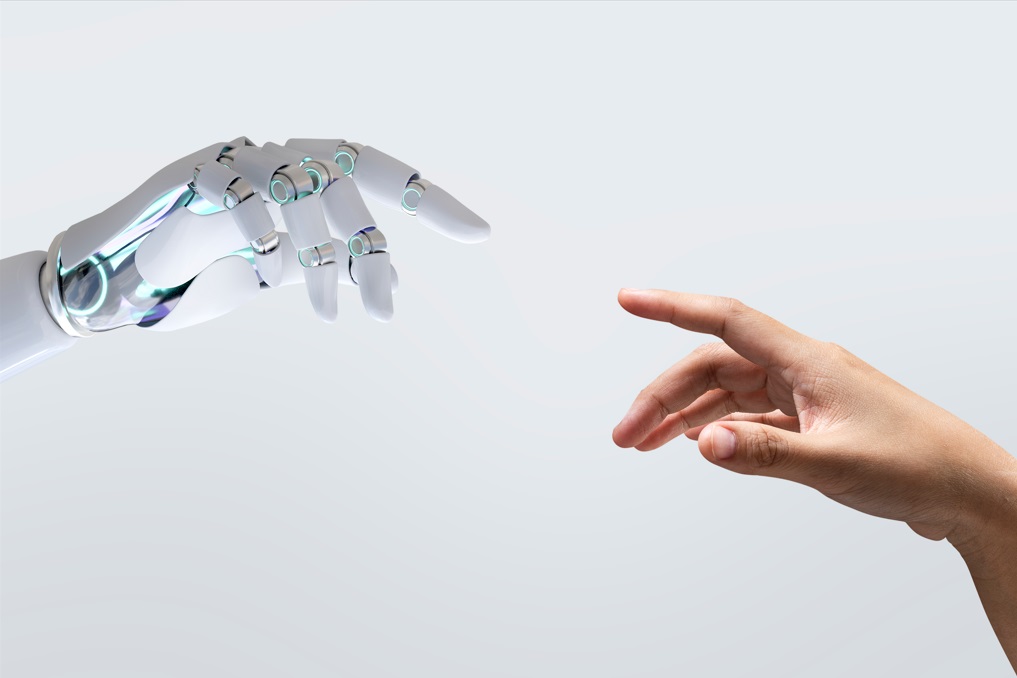One of the hottest topics in today’s society is artificial intelligence. There are many different definitions of this subject, so I’ll just offer the definition that Wikipedia gives as its definition: the creation and theory of computer systems that can perform tasks similar to those of human intelligence in general, such as visual perception. Creation and development of methods for perception, speech recognition, decision making, and translation between languages. Artificial intelligence is a new technology that is developing.
What is Artificial intelligence?
Artificial Intelligence (AI) clearly proposes the ability of computers and computer systems to perform tasks similar to human intelligence in general, such as visual perception, speech recognition, decision making, and translation between languages.
AI describes machines that are capable of thinking and learning on their own without being explicitly programmed. These devices and more are becoming more and more common with the expansion of computing power. Now you can find them in our smartphones, homes, and even some popular social media websites.
Artificial Intelligence (AI) is the creation of human intelligence based on the intelligent operation of machines, especially computer systems. IS research is based on designing algorithms with desired properties and developing algorithms with the characteristics of human intelligence such as research, knowledge, planning, learning, communication. , with desirable qualities such as cognition, problem solving, and self-correction. How does it even work?
Learning
This concept was formulated in 1956 at the Dartmouth Summer Research Project at a conference on artificial intelligence. The field of AI research was born at this conference and over time has grown to include techniques such as learning from data, language understanding, image interpretation, and complex mathematical calculations.
Artificial intelligence refers to two types of intelligence. The first type is Artificial Narrow Intelligence (ANI) which focuses on a specific task, such as playing chess or translating a language, and does not mimic human ability. The second type is artificial general intelligence (AGI), or artificial intelligence that incorporates many skills and subsumes humans in most tasks, which is the ultimate goal of AI research.
The creation of artificial intelligence began during World War II, when modern computers were being developed.
Reasoning
Artificial intelligence is a broad term that refers to the creation and theory of computer systems that are capable of performing tasks similar to human intelligence in general, such as visual perception, speech recognition, decision making, and Translation between languages etc. Artificial intelligence is used in many ways in today’s business to make life easier. For example, artificial intelligence is used to recognize pedestrians in vehicles and other vehicles on the road. Artificial intelligence is present in everything from our smartphones and computers to the latest car models.
Artificial Intelligence (AI) is a branch of computer science that aims to create machines capable of intelligent processes. This can manifest in a variety of ways – from solutions to specific problems in games or traditional decision-making fields to any kind of human-like computer simulation.
Planning
Artificial Intelligence is composed of two distinct branches:
- Machine Learning and
- Deep Learning.
Both of these are programming techniques that allow computers to learn from data without being explicitly programmed how to find patterns, anomalies, etc. It started around 2010 when more powerful processors allowed them to develop artificial intelligence applications for companies. Machine learning algorithms need a data set from which they learn, and they are ‘trained’ on how to rank different patterns in the universe of significance or relevance.
Natural language processing
Artificial intelligence is increasingly becoming part of our lives due to advances in natural language processing. NLP is a term used to describe software capable of listening to human speech as it is spoken and translating it into content. NLP makes AI more effective because it allows AI to respond to humans in their own language, using the most common methods of humans.
Perception
Artificial intelligence or AI is a branch of computer science that explores the dream of creating machines that can make objects capable of performing tasks such as decision-making and problem-solving. This type of intelligence is indicated on such grounds because this type of intelligence is not found in human or animal systems.
Conclusion
AI research has contributed to the development of self-driving cars, Google‘s AlphaGo algorithm, IBM’s Watson, Amazon’s Alexa, and Apple’s Siri — all now and more in the future. will continue to do. Some of the most popular uses of AI include self-driving cars, digital assistants like Siri and Alexa, and chatbots.”



